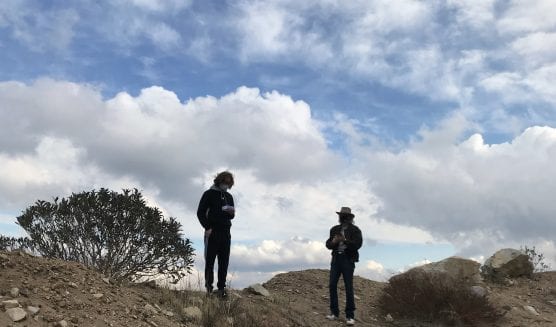For the fifth time in a row, the College of the Canyons Aerospace and Sciences Team (AST) has been selected to participate in NASA’s High Altitude Student Platform (HASP) program.
Utilizing its HASP 2017 mechanical design, the team plans to build a compact scintillator—which converts high-energy radiation to a visible light—to detect gamma rays and neutrinos in the upper stratosphere. The data will be used to determine the number of antimatter collisions occurring in the upper atmosphere.
“Our goal is to collect data on the frequency of antimatter collisions in the upper stratosphere,” said Sean Tomer, NASA HASP project manager for 2021. “This should give us a better understanding of the composition and origin of the universe.”
The 24-member team will use a plastic scintillator to test the effectiveness and longevity of this class of radiation detector during prolonged exposure to UV and cosmic radiation. Using an altimeter, the scintillator will be exposed to the atmosphere at an altitude of 100,000 feet for 14 hours and a photomultiplier will count scintillations.
“It is very exciting to have been selected once again for this prestigious program,” said Teresa Ciardi, a physical science professor at the college. “The team has worked very hard despite the challenges posed by COVID-19 and it has clearly paid off.”
Ciardi and Greg Poteat, an adjunct manufacturing instructor, provide COC AST with guidance and support as co-advisors.
COC AST will spend the rest of the Spring 2021 semester building and testing their HASP experiment.
Vacuum and thermal testing is scheduled to take place at NASA’s Columbia Science Balloon Facility in Palestine, Texas in July 2021.
HASP is expected to launch on Sept. 6, 2021 from NASA’s site in Fort Sumner, New Mexico.
“I am extremely proud of this team, which came together despite the challenges posed by this pandemic,” Tomer said. “I think it’s because we all share this passion for scientific discovery. Plus, Teresa and Gregory have inspired all of us so much, and they have provided incredible support every step of the way. We look forward to a successful launch and collection of data.”
Launched in 2015, the College of the Canyons Aerospace and Sciences Team participates regularly in the NASA’s HASP program and RockSat-X mission.
To date, the team has flown four high altitude balloon missions aboard the NASA HASP system; two to collect interplanetary dust particles, and two to neutralize harmful acids within the upper stratosphere.
HASP is a joint project between NASA’s Wallops Flight Facility Balloon Program Office in Virginia, NASA’s Science Mission Directorate, the Louisiana Space Grant Consortium (LaSPACE) in Baton Rouge, and the Columbia Scientific Balloon Facility in Palestine, Texas.
For more information about COC AST, please visit the team’s website.
Like this:
Like Loading...
Related





 Tweet This
Tweet This Facebook
Facebook Digg This
Digg This Bookmark
Bookmark Stumble
Stumble RSS
RSS
































REAL NAMES ONLY: All posters must use their real individual or business name. This applies equally to Twitter account holders who use a nickname.
0 Comments
You can be the first one to leave a comment.